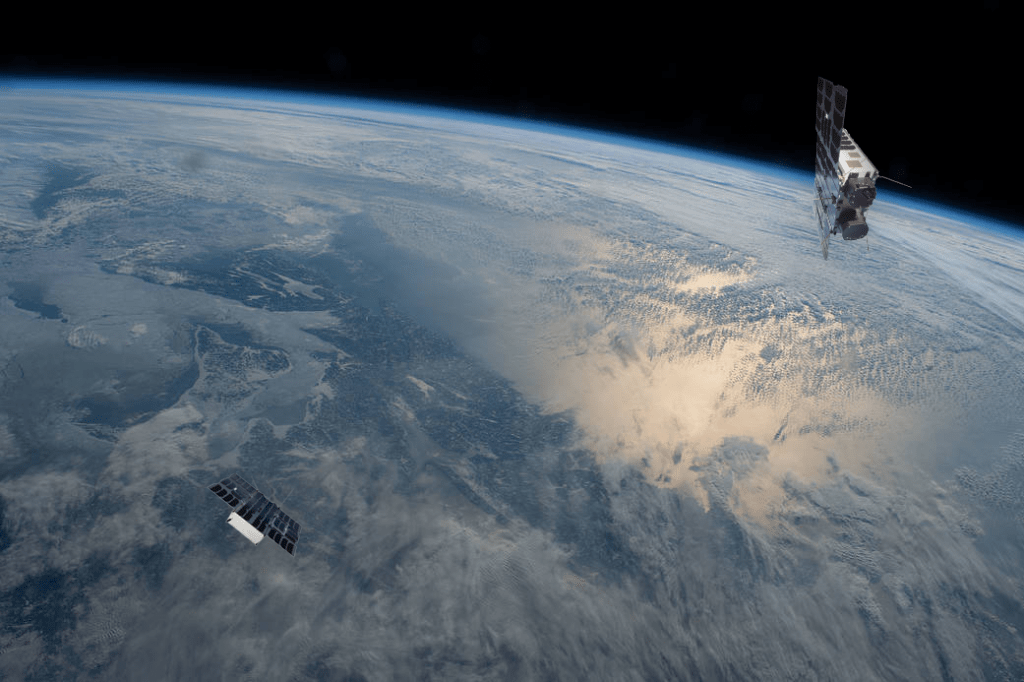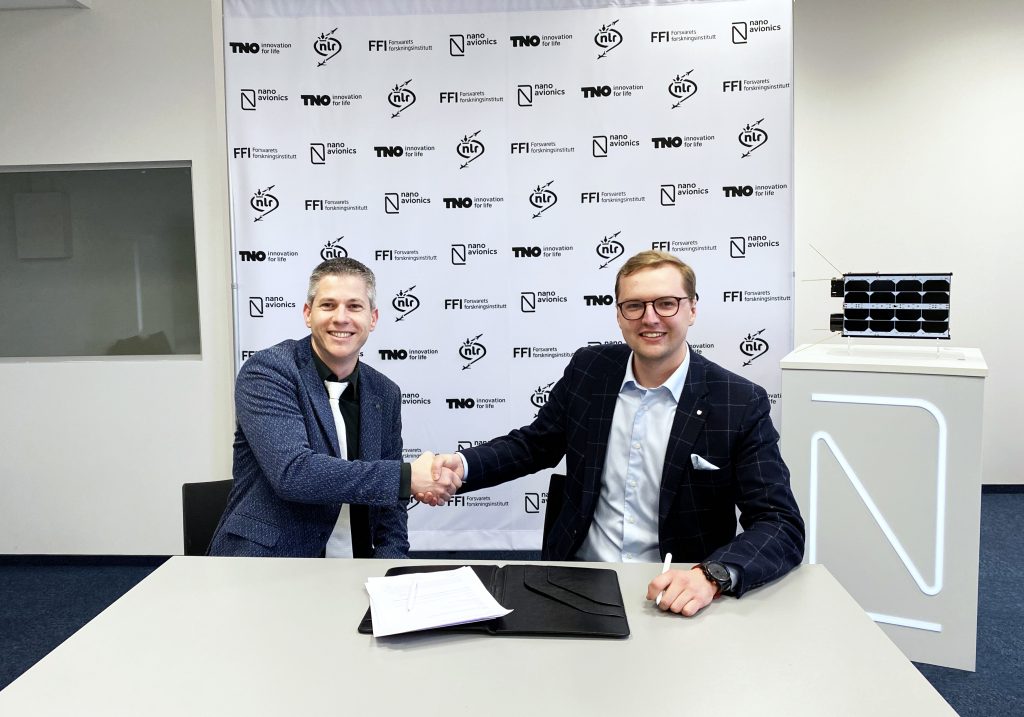Be part of the future with us!
Register now for our online product launch event on May 23rd.
A consortium of Norwegian and Dutch research centres selected satellite integrator NanoAvionics to build two nano-satellites, ‘Birkeland’ and ‘Huygens’. The purchase order is part of a military use of space (MilSpace) project under a bilateral strategic mutual assistance in research and technology (SMART) memorandum of understanding (MoU). The two nano-satellites are intended to demonstrate the concept of a space based spectrum monitoring system to geolocate radar signals. It is the first time for Norway and the Netherlands to launch a formation of satellites.
The binational radiofrequency observing satellites mission is the first known two-satellite system to detect, classify, and accurately geolocate Radio Frequency signals, including navigation radars used on ships, by combining the measurement angle of arrival (AoA) and time difference of arrival (TDOA). Simultaneous detection of pulsed radio signals by both satellites flying in tandem enables accurate geolocation during all weather conditions.
“Exchanging science, research and technology experience in this MilSpace mission is a great start for flourishing partnerships with the participating organisations,” said Vytenis J. Buzas, co-founder and CEO of NanoAvionics. “The agreement is also an example of the new cross over between commercial and military space missions. This was made possible by standardising NanoAvionics’ bus design which allows our nanosatellites to host a wide variety of payloads for diverse applications.”


“Birkeland” and “Huygens” will both be based on NanoAvioncs’ pre-configured M6P nano-satellite bus with a deployable solar panel configuration, high precision ADCS and propulsion system. The mass of each 6U nano-satellite will be up to 10 kilograms. The launch of the two nano-satellites is scheduled for the second quarter of 2022 when they will be placed into a polar low Earth orbit (LEO) with an altitude range of 450 to 600 km. Both will be positioned in the same orbital plane with a separation of 15-25 km, allowing the two nano-satellites to simultaneously detect emissions from radar systems. For a polar LEO orbit of 600 km altitude, the payload antenna will be able to cover any point on the Earth’s surface at least four times per day.
Drawing from experience from the Norwegian NorSat-3 and the Dutch BRIK-II missions, the consortium for this strategic and bilateral mission also expects to gain valuable insights into formation flying. The project team consists of the Norwegian Defence Research Establishment (FFI), the Royal Netherlands Aerospace Centre (NLR) and Netherlands Organisation for Applied Scientific Research (TNO).
ABOUT NANOAVIONICS:
NanoAvionics is a nano-satellite bus manufacturer and mission integrator. Its flagship multi-purpose M6P and M12P are the first preconfigured nano-satellite buses in the sector, designed to serve emerging commercial space markets. The company’s efforts are focused on enabling critical satellite functions and optimizing their launch, hardware and operation costs – ranging from single missions to constellations. Its core engineering team has implemented over 75 successful satellite missions and commercial projects during the past several years.
ABOUT FFI:
The Norwegian Defence Research Establishment (FFI) is the prime institution responsible for defence-related research in Norway. The Establishment is the chief advisor on defence-related science and technology to the Ministry of Defence and the Norwegian Armed Forces’ military organization. Its principal mission is to carry out applied research and development to meet the requirements of the Norwegian Armed Forces.
ABOUT NLR:
NLR – Royal Netherlands Aerospace Centre is a leading international research centre for aerospace. Its mission is to make air transport safer, more efficient, more effective and more sustainable. Bolstered by its multidisciplinary expertise and unrivalled research facilities, NLR provides innovative and comprehensive solutions to the complex challenges of the aerospace sector. NLR’s activities span the full spectrum of Research, Development, Testing & Evaluation (RDT & E). Given NLR’s specialist knowledge and state-of-the-art facilities, companies turn to NLR for validation, verification, qualification, simulation and evaluation. They also turn to NLR because of its deep engagement with the challenges facing our clients. In this way, NLR bridges the gap between research and practical applications, while working for both government and industry at home and abroad.
ABOUT TNO
TNO works together with governmental authorities and industry on innovative solutions that let us stay one step ahead of the threats and risks in society. Using our knowledge of technology, people and organisations, we work on products and services that create resilience and provide perspectives for our society. We also help the armed forces and safety organisations to innovate. Exchanging knowledge with the cream of the international crop lets us expand and add depth to the national knowledge base and helps us retain that crucial knowledge for the Netherlands. TNO has a leading position in radar and aerospace instrumentation.